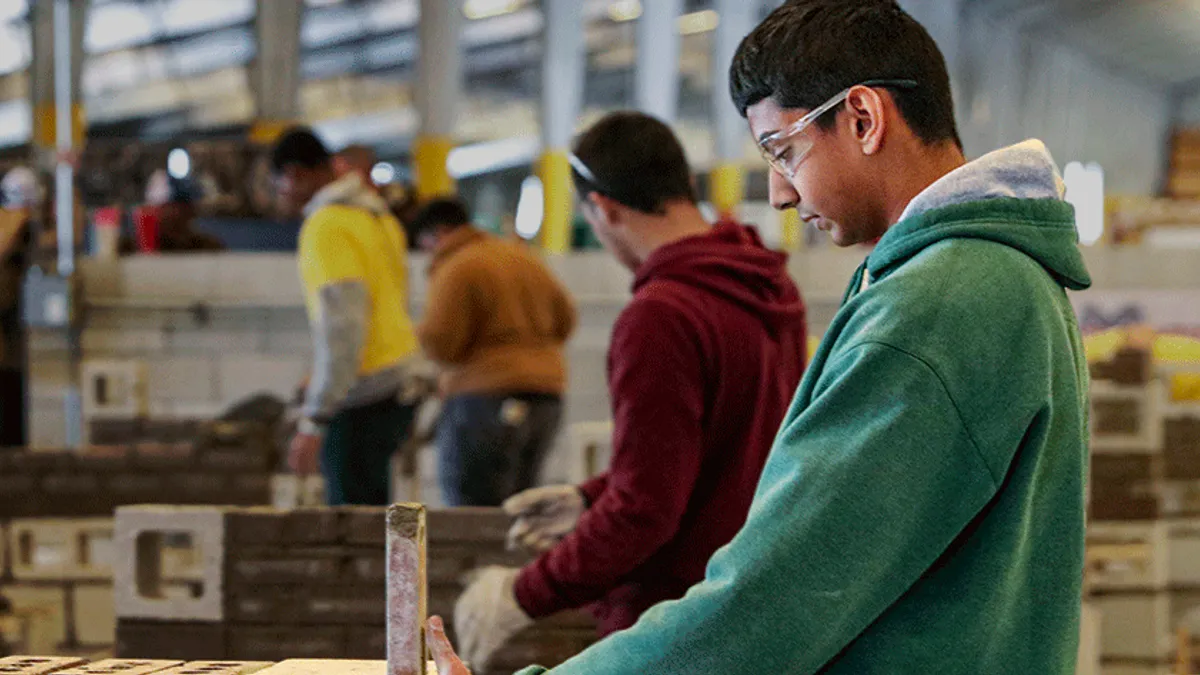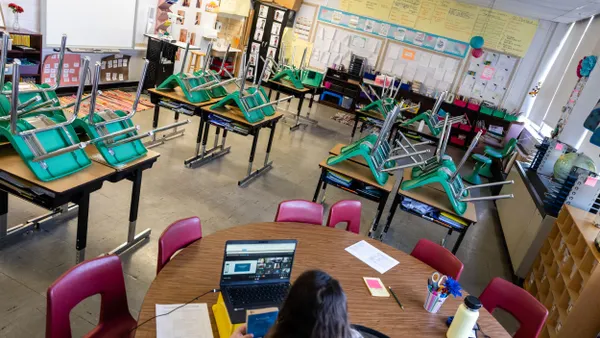Career and technical education (CTE) programs have always played an important role in the United States education system. CTE offers valuable career skills and hands-on learning opportunities for in-demand fields to young learners, providing a healthy compliment to more traditional academic courses.
In a post-pandemic world, there are signs that CTE will become an even more critical component of schooling. Having been limited to learning through a computer screen for more than a year, students may look at the experience of CTE as a refreshing chance to more engaged and active in their education. Students and parents may also be more conscious of what types of careers are considered "essential" and explore the pathways to skilled trades and technical jobs that might be more pandemic proof.
Adding these changing priorities to the ongoing struggle for key industries, such as construction, to meet the growing demand for skills and labor means CTE may now become more important than ever. Interest grows in hands-on learning, while employers are desperate for more talented professionals to enter the pipeline.
However, CTE programs still face challenges. Old stigmas and stereotypes about vocational education linger, and even as the college debt crisis soars, students are continuously encouraged to pursue a four-year bachelor's degree rather than seek other career training options. With college preparation still a major focus point for schools, funding and support for career and technical education programs is often limited. CTE instructors can feel as if they are looked at in a different light than those for other courses, operating in a silo apart from the rest of the school community.
Knowing the critical role CTE will play in the near future and the impact on the long-term health of the nation's essential industries, it's important that academic teachers, counselors and administrators take steps to interact more with their school's CTE programs and better integrate them into the school community. Establishing relationships between CTE and other parts of the school help to overcome those old stigmas and creates more pathways to success for everyone involved.
Here are some ways that you can build a better connection to the CTE programs and instructors in your school.
Collaborate with Your School's CTE Program
CTE classes work on a lot of different projects. These projects give students a chance to practice and hone their craft, but they also result in tangible final products that can be useful.
When developing project assignments, CTE instructors may consider opportunities for collaboration that can benefit both students and the school as a whole.
For example, if you help to run the school's theatre club and need set pieces built for an upcoming play, you could approach your school's construction trades instructor about partnering up. Carpentry students can use a project like that to practice various tasks like measuring and cutting wood, assembling small structures and painting. The CTE students get experience, while the drama department gets help producing the play.
Another form of collaboration could be asking CTE representatives to be guest speakers in academic classrooms to give examples of how different concepts and theories can be put into practice. Science, technology, engineering and math (STEM) are taught throughout the school, but CTE workshops are some of the few places where real action using STEM principles can take place. Having CTE programs provide demonstrations can help other students understand why they are learning what they are, and it also helps build respect and rapport between different parts of the school that might not otherwise interact.
Celebrate Your CTE Program
Just like winning a state championship in football or being ranked among the top schools in your state, accomplishments are worthy of celebration. And it's important that your school's CTE programs also feel the love when they achieve something great or have a special event going on.
Programs and instructors may compete for various accolades, such as the Harbor Freight Tools for Schools Prize for Teaching Excellence. This annual recognition awards more than $1 million in prize money to public high school skilled trades teachers.
Craft students also have many opportunities to earn recognition. For schools with SkillsUSA chapters, members can compete in the different craft championships, where top students in their craft in each state can advance to participate in the national championships. CTE students might also enter competitions like Build Your Future's I BUILT THIS! video contest, where they can film their construction projects for chances to win.
Students who compete and perform well in these competitions reflect well on the training program they come from and can bring a lot of support and attention to their school – the school should celebrate them in kind.
Another way to support CTE students is through Signing Days. Many people think of signing day as when athletes sign their letter of intent to play for a college sports team. But in recent years, skilled trades signing days have also become popular, when craft students announce they have been hired by a local company or accepted into an apprenticeship or postsecondary training program. If your school holds signing days, you should celebrate the CTE students on these days as well.
There are special times of the year when different subjects or people are recognized – for example, March is Women's History Month and June is Pride Month. If your school likes to use these themed months, days and weeks to bring attention to certain topics, it should also include CTE Month in February and events that celebrate the skilled trades, such as Careers in Construction Month in October.
Encourage Students to Participate in CTE
Many students, even those who are gifted, can struggle in traditional classroom settings. Lectures, textbooks, memorization and exams are efficient and help establish academic baselines, but different students learn in different ways.
One of the chief benefits of career and technical education is the hands-on nature of the learning. Numerous studies show that this style of education helps students stay more alert and engaged, helping them absorb the information better.
But CTE isn't only beneficial for students who struggle academically. Hands-on learning is shown to result in better overall student outcomes. Students who take CTE courses have lower high school dropout rates and higher graduation rates than students who have not taken a CTE course, and they have also shown to develop better "soft skills" such as problem-solving, communication, time management and decision-making.
If you have students or know of any who might be in need of different learning options or opportunities to apply the knowledge they've gained in traditional classrooms in a practical way, encourage them to explore the career and technical education options at your school. Not only are you helping the student have a better experience, but you are also helping your CTE's enrollment numbers, which can help give them more support and funding from the school board.
Career and technical education is an important section in the school ecosystem, and the skills they teach students can directly translate to employment in essential industries. However, in recent decades, CTE programs have become more marginalized as educational budgets shrink and priority is given to programs that contribute to college enrollment.
By taking steps to include these programs in the culture and community of the school, you can support CTE and showcase the value and opportunities it offers.










